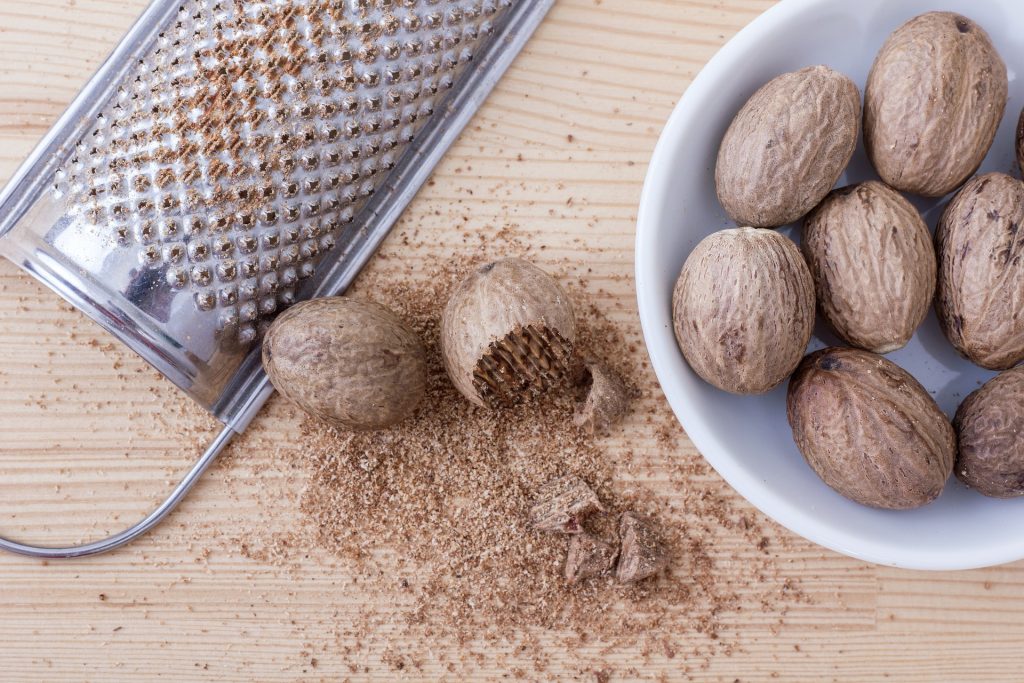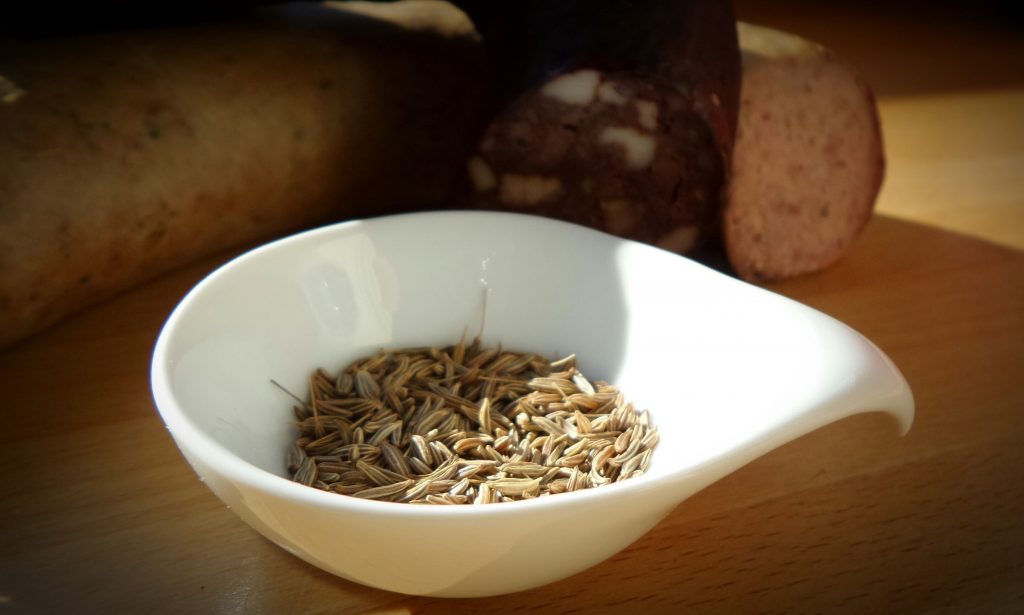
Cinnamon
It is obtained from the inner part of the bark of the Ceylon cinnamon tree, the Cinnamomum Verum that can reach 15 meters height. This cinnamon is light brown in tone and has an intense, hot, sweet and spicy scent that makes it unique.
Do not confuse it with the Cassia cinnamon that is from the same family, but has different properties. The cassia cinnamon contains the coumarin substance, in great quantity, unlike the Ceylan cinnamon (the true cinnamon). Thus, the excessive and regular consumption of Cassia cinnamon, due to its low price, can become harmful to the health, in particular, can provoke imbalances in the liver.
In terms of physiognomy, the chopsticks are also different: The Cassia cinnamon is darker brown and has a single splinter in the interior, while the Ceylon cinnamon has a light brown color, with thinner and superimposed flakes, forming several layers, which makes the inside of the stick more filled and dense. The powder is more difficult to distinguish, so it is recommended to buy it in trustworthy shops.
Ceylon cinnamon is rich in calcium, manganese, and fibers that allow aiding in the functioning of the digestive, respiratory tract or to lose weight. Its anti-inflammatory and antibacterial power also relieves muscle pain, reduces blood sugar (helps in case of diabetes), hypertension, heart stress, arthritis, slows the onset of Alzheimer and prevents degenerative imbalances, among other benefits.
The consumption of cinnamon should be avoided or monitored by professionals in case of diabetes’ stresses or when there is a consumption of heart, blood system medications or other types of medications. It is also not recommended for pregnant women because cinnamon can be abortive, causes dilation of the uterus (from the onset of the first menstrual bleeding to the end of breastfeeding) or in children up to the age of seven.


Clove
The bud of the tropical tree blossom, native to the Moluccas Islands, in Indonesia, offers a spicy pungent aroma with notes of amber and astringent, which stands out in the world of spices for its unusual floral bud and brown color after drying. It has antiseptic, healing, antifungal, antibacterial, anti-inflammatory, antioxidant, analgesic, aphrodisiac properties, among others. It is recommended to treat coughs, toothaches, bronchitis, intestinal gas, inflammation, as well as accelerate metabolism and digestion (reduce fat), thus an ally to lose weight.
The clove is not recommended for pregnant or breastfeeding women, children under six years old, people who have negative stresses such as gastritis, ulcers, irritable bowel, colitis, Crohn’s disease, liver disease, epilepsy, Parkinson’s disease or other stresses neurological disorders.

Saffron
They are the long, orange horn-shaped stigmas that are born in the Iridaceae family flowers, of lilac, violet or white color, which after dry give rise to saffron, the real one. A preciousness, since to obtain a kilo more than 150 thousand flowers are necessary, whose stigmas (each flower only gives three) are harvested by hand, equivalent to a plantation of two thousand square meters. Hence, in the international market, the kilo of the so-called red gold varies between one thousand and three thousand euros. That’s why people usually only buy one or two grams and should only be purchased in reliable stores since the powder runs the risk of being adulterated with other spices.
Known for its bitter taste and distinctive aroma, the saffron is often confused with turmeric, also known as saffron of earth. This is a rhizome whose price is much cheaper and when it is sold in powder is also dark yellow or orange and with powerful properties (see below).
The saffron flowers have antioxidant, anti-inflammatory and antimicrobial properties that in practice inhibits the development of bacteria, parasites, and fungi or other imbalances.
Consumption of saffron treats and prevents renal, menstrual, ocular, stomach and cardiovascular stresses (reduces cholesterol and fights diabetes), helps to block degenerative imbalances (colon, liver or ovaries) and also strengthens the nervous system. Its antibacterial properties also allow delaying aging and treat skin stresses such as acne and pimples.
Regular consumption of saffron should be done under the supervision of a specialist, since too much may be toxic. To make tea it is recommended one gram for one liter of water and it must be boiled for five minutes.


Long Curcuma
It is a rhizome, from the ginger family, also known as fake saffron, Indian saffron or even turmeric. It has the earth as a cradle and offers an intense exotic smell of earthy nut with a bitter and slightly spicy taste that stands out for its orange color (can also be white). The orange tone is due to curcumin, a substance that gives the yellow color to the curry and often leads to confusion with saffron plants, true saffron (see previous text). The powerful Curcuma, long used by traditional Chinese and Indian medicine, can easily be found in the supermarket or a health food store, in bulbs or powder, and its price is low.
“Curcuma is the most powerful anti-inflammatory that nature manufactures,” says Brazilian physician Lair Ribeiro. This cardiologist, nutritionist, and author of 37 books of which 15 are ‘best sellers’ encourages the consumption of this food since all chronic diseases have as a causative factor inflammation. “Nobody has an interest in advertising it because it is democratic and cheap [unlike the drugs that the pharmaceutical industry sells],” says Lair Ribeiro.
Curcuma has antioxidant, anti-inflammatory, antiviral, antibacterial, antifungal and anti-degenerative properties. All this power has a strong influence against negative stresses such as diabetes, cholesterol, heart, gastritis, Crohn’s disease, Parkinson’s, Alzheimer’s and degenerative imbalances (of the colon, lungs or prostate, among others).
It is not a coincidence that India has one of the lowest rates of people with degenerative imbalances. This fact does not go unnoticed to the scientific community that has made deep studies, in particular, the food is rich in Curcuma.
However, it should not be forgotten that the pure curcumin substance is not well absorbed into the bloodstream, experts say. That is why the consumption of Curcuma should be done together with black pepper, which contains piperine and causes a normal absorption of curcumin. It is not a coincidence that the Indian curry contains Curcuma and black pepper.
Curcuma should not be consumed by people who are already taking anticoagulant medications, who have renal or stomach stresses, after surgery, while pregnant or breastfeeding. Consumption should always be supervised by a specialist.

Cardamom
Small greenish oval seed with some black grains in the interior that are produced by a plant of the family of the Zingiberaceae, the same of ginger. A native of southeastern India and offers an intense refreshing sweet taste that includes mint and citrus notes with a spicy finish. Its market value is also not cheap if it is green cardamom (pay attention to the composition when buying powder, because sometimes they add brown cardamom that has a much lower price).
Cardamom is used in the perfume, cosmetics and cooking industry (pay attention that when cooked you should not eat the bark only ingest the seed kernels).
The properties of the cardamom produce diuretic, sputum, laxative, antiseptic and decongestant effects in our organism. In practice, its consumption helps the digestive system, treats stomach stresses such as ulcers, flu, bronchitis, asthma or cough, keeps gums and teeth healthy, lowers blood pressure, is an aphrodisiac, helps prevent degenerative imbalances.
How to use cardamom in tea: put three crushed seeds in a liter of boiling water for 10 minutes and after it is cold, it should be taken after meals, for example, to aid digestion. You can also make a maceration of wine (20 seeds for a liter of wine, for 15 days) to drink in a cup as a digestive, after lunch or dinner.
The consumption of cardamom is not advised for pregnant or while breastfeeding and in case of any doubt, consult a specialist.

Nutmeg
It is the seed of the fruit of the Nutmeg tree (Myristica fragrans), a native of the Moluccas Islands, in Indonesia, which can reach 20 meters. Similar to apricot in its shape, the fruit takes on the red or yellowish color that after drying offers a seed similar to a fibrous core with a sweet woody aroma and a spicy camphor touch.
The daily consumption of nutmeg should be done with caution, just a pinch of the powder or a little grated (one to two grams not more), because from five grams, it can be harmful and cause auditory and visual hallucinations, motor uncontrol and depersonalization. Be careful, in the woman, it can be abortive. It should not be consumed by pregnant or breastfeeding women.
But when consumed in moderation offers multiple benefits to our organism as it is a stimulant, sedative and relaxing with anti-inflammatory and antiseptic properties. Its properties stimulate the brain system – it helps to overcome stresses of exhaustion, fatigue, improves concentration and protects for example of Alzheimer’s – it strengthens the digestive system, liver, and kidneys, helps detoxification and prevents uric acid or gout, inflammation of joints, strengthens bones, increases blood circulation and stimulates the cardiovascular system, among many other benefits. This spice has anti-degenerative properties.
It also helps to overcome insomnia (a pinch of nutmeg in a glass of milk) and has aphrodisiac properties.
Its consumption should, however, be moderate and can be made in powder, seed or oil. For example to make a tea, boil one liter of water with half a teaspoon of nutmeg for 10 minutes.

Cumin
Small narrow, pointed rectangular seeds with light brown longitudinal grooves that convey an intensely bitter taste with citrus notes and slightly spicy. A native of Egypt and can be bought in seeds, oil or powder, but in the latter form, special attention is needed, since coriander seeds are often used which are much cheaper.
The properties of cumin benefit the digestive system, stresses the respiratory system, strengthens the immune system, reduces bad cholesterol and diabetes, controls blood pressure and its minerals help fight anemia, osteoporosis and aging skin, strengthening its elasticity, among other benefits. Cumin is also rich in antioxidants and several essential oils that help prevent degenerative imbalances.
Excessive consumption of cumin may cause stomach and intestinal irritation and is not recommended for pregnant women, but while breastfeeding it may be beneficial to boost milk production.
This text is an awareness. According to the season of the year and the moment in which you are, it is up to each one to feel if they should consume this food. The dosage and frequency depend on the nature and physical condition of each Human Being.




